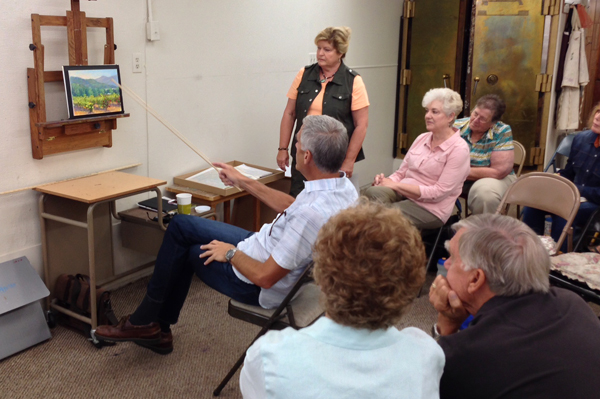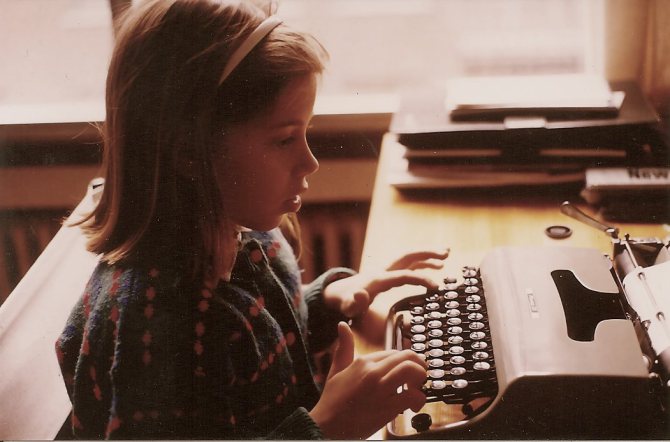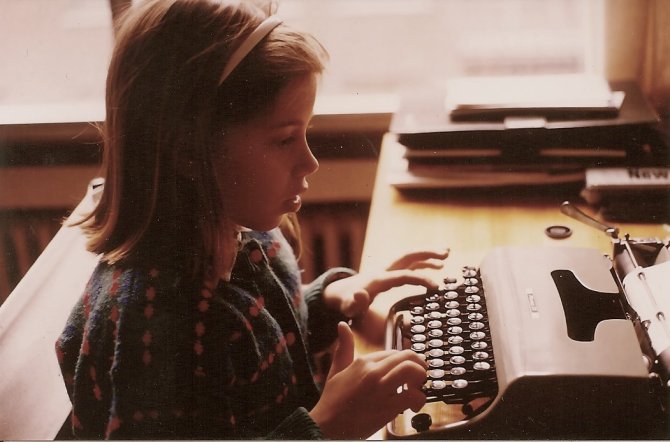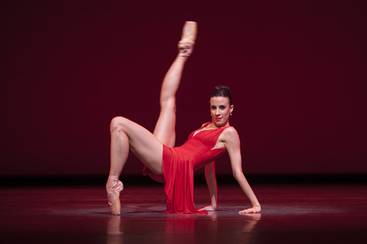
BITCHIN’ PICKS: July 1 – 8, 2014
Brand new, ongoing, and soon-to-close exhibits worth dragging your butt out for.
1) KOFFLER CENTRE OF THE ARTS : 180 Shaw St. https://kofflerarts.org/
Penelope Stewart – Vanitas June 26- August 31
The scoop: This site-specific project built by Stewart for the Koffler Centre features dozens of delicate motifs and a larger than life cubic hive built entirely of cast beeswax tiles.
Why you need to see it: Vanitas represents a new height in Stewart’s beeswax work. The show is brimming with sensory stimuli – the slick beeswax tiles, the powerful aroma, and the honey dipper door handle that give you access to the massive hive are all incredibly alluring.
2) ART GALLERY OF ONTARIO: 317 Dundas St W. https://www.ago.net/
Geoffrey Farmer – Every day needs an urgent whistle blown into it July 5, 2014 – September 7, 2015
The scoop: Placed in the historic Henry Moore Sculpture Centre, this brand new automated sculpture work promises to impress with its use of kinetic components, sound, light, and viewers’ bodies.
Why you need to see it: When has Geoffrey Farmer let you down? His reputation for innovative display, and his 2013 Gershon Iskowitz Prize win easily make Every day needs an urgent whistle blown into it one of the most hotly anticipated summer openings in Toronto.
3) THE MOCCA: 952 Queen St W. https://www.mocca.ca/
Over the Rainbow: Seduction and Identity June 22 – August 17
The scoop: Curated selections from the stunning private collection of power couple Salah Bachir and Jacob Yerex.
Why you need to see it: If you didn’t run out to see this incredible show when it debuted during World Pride, do yourself a favour and clear some space on your schedule for it now. Get ready for sexy works by heavyweights including Attila Richard Lukacs, Betty Goodwin, General Idea, Andy Warhol, Keith Haring, and Annie Leibovitz.
4) GENERAL HARDWARE: 1520 Queen St. W. https://generalhardware.ca/
Celia Neubauer – Oblivion June 26 – August 18
The scoop: A suite of delicate and ethereal paintings that combine architectural, celestial, and terrestrial references.
Why you need to see it: The soft glow and skyward gaze of Neubauer’s work make Oblivion the perfect fare for a hot and hazy summer afternoon.
Tweet us your picks @ArtBitchTO
SOURCE: Art Bitch | Toronto art review and blog – Read entire story here.

The Importance of Art Critiques | 4 Tips for Receiving Feedback

A candid shot during critique day, offered in my weekly masters class.
- Spend time contemplating what you really hope to gain from the critique. This is where personal introspection will be useful. Most of us try very hard. We put the total sum of our abilities into every painting. What we often hope for is more of a validation of those efforts than a brutal, sometimes seemingly callous evaluation of what is technically wrong.
- Know what you like about your painting before asking for criticism. The better you know what it is you like or dislike before receiving criticism, the better able you will be to put it into perspective. Listen to what is said, make sure it applies, and then ask yourself: Do I think it would be better changed or do I like it just the way it is? Remember; it doesn’t have to become an argument to win the critic over to your side. It is just their opinion.
- Seek peers whenever possible. The more respect you have for the critic, the easier it is to accept. Evaluate the critic by studying his or her works. Attempt to understand his or her biases. We all have them. Some of us are technical absolutists and others celebrate the breaking of rules.
- Don’t discredit positive feedback. It is often easier for us to accept negative criticism. When I praise a student, they frequently respond, “Well, I didn’t know what I was doing and I couldn’t do it again.” When a negative comment is given they respond with, “I knew I didn’t know what I was doing. I am so stupid.”
MORE RESOURCES FOR ARTISTS

• NEW! Successful Pastel Portraits with Alain Picard Value Pack is on sale now!
• Subscribe to Pastel Journal magazine
• Watch pastel art workshops on demand at ArtistsNetwork.TV
• Get unlimited access to over 100 art instruction ebooks.
SOURCE: Artist’s Network – Read entire story here.

Writing Process Blog Tour
Thanks so much to Daniela Cascella for inviting me to take part in the Writing Process Blog Tour. Daniela’s writing, which you can read in her blog as well as in her fantastic book En abîme, is hugely influential for me. I strongly identify with the way she uses language and her interplay of personal memory and sound, of culture and history.
Here are my answers:
What am I working on?
I am currently in a very busy period with quite a substantial amount of commissions for various types of publications and exhibition spaces, which include essays, interviews and reviews. So for the the past three months I have focused on meeting all these deadlines while maintaining the highest possible standard of writing. Whenever I have to produce a lot of writing in a small amount of time I worry about the quality of my texts: repeating myself, running out of fresh ideas and so on. There is always this little paranoia lurking in the back of my head, which adds to the stress of meeting deadlines.
This is why I am very much looking forward to my summer holidays so I can focus on a couple of personal projects that will demand quite a lot of uninterrupted time. The first is a long-form essay which will explore the use of interior and domestic spaces across the fields of film and visual arts to convey psychological states and address issues related with class, domesticity and creative aspirations. The second project could become my first novel (!). I am on the very very early stages of researching and note taking, so it wouldn’t be immediate, but the ideas and the urge are there. I haven’t got the slightest idea of how to write a novel, having written in various short forms up until now, so I still have to develop a methodology of sorts. At this point, however, I just want to sit down and write, and see where that takes me.

Me, writing god knows what at 8 or 9 years old
How does my work differ from others of its genre?
I have no idea of how my work differs from others of its genre. That is probably not for me to say! I can only say that one of my pet hates involves art writing that sounds very complicated and lofty, but which is just masquerading a total lack of content and personal ideas. I guess that can actually be applied to any sort of writing. I like writing that contains and discusses complex ideas but that manages to do so in an accessible, readable manner. I strive for my writing to be like that.
What do I write what I do?
I have always considered myself a writer, since I was a small child. I started writing short fantastic stories when I was 6 or 7 years (I actually wish I could find those manuscripts, typed with a red Olivetti type writer my brother gave me as a present). When I was a teenager I went through a heavy poetry phase, and all wrote was poetry, which I sort of understood as lyrics to songs I never wrote (yes, I am frustrated musician). I then became a journalist and then I specialised as an art critic, which I have been for a few years now and which is a format that I adore and feel very comfortable with. Art writing is elastic enough to allow and welcome different approaches, even rather experimental, and I can address not just art but also film, critical theory, philosophy and music, which is basically what I want to write about, so I feel very happy about having found this outlet and carved my niche. However, fiction beckons. I have been wanting to write fiction in the form of a novel for pretty much a decade, but it really wasn’t the moment. I feel ready now, I just need the time, which is why I have started applying to writing residencies. It is the first time that I actually have the need for them. What I mean is that I don’t feel tied to any particular type of writing, I feel that the form my writing takes is just an adaptation to my needs and aspirations in different moments. What prevails is an urge to write; to read, to think and to write about art, culture and subjectivities. My ideas for my prospective novel address the same concerns as my art writing. It makes no difference to me.
How does my writing process work?
There are two ways to respond to this question. The first one would be to explain how I write. And the thing is, I don’t have a very strict methodology in place, it varies depending on the particular texts I am facing. After all these years at it, I am very disciplined when it comes to writing and I can manage to just sit down and write on a daily basis, which helps a lot. I am extremely responsive to stimulus though, so I usually benefit from exposing myself to a lot of reading, exhibition seeing and film watching when I have to write. When I am very busy with deadlines and I have to chain my leg to my desk, I barely have time to “nurture” myself in that way and I become quite despondent about it. I need good inputs to produce decent outputs. I believe in intuition, so sometimes I sit to write with absolutely no idea of how am I going to go about it. It just happens. I have never really suffered from “blank page fright”. I am a terrible public speaker, I get nervous when I have to talk or present to an audience, but when I am writing I always feel ok. I might hate what I have written on a given day and delete or re-write most of it, but I am already “in process”, and eventually I will get to something I am pleased with (hopefully). I always, always, write on my computer. I carry a notebook with me at all times and I take lots of notes, and sometimes I will even draft structures for pieces. But once I sit down to write I will barely look at them or use those structures. When I write I inhabit a brand new place, with unpredictable results. When I am working well, I am “riding the wave”. When nothing good comes out, I get mildly depressed or rather cranky, but I keep writing, just in case I can get “to the wave”. I always, always write to music, since I was little. It is very important for me and really determines the mood of what I produce. It usually is experimental, electronic or classical music. It has to be instrumental music, no words. Steve Reich is pretty much my usual soundtrack of choice. Or Eliane Radigue. I play minimal, repetitive music because it gets me to a focused, productive place.
The second way of answering has to do with a new methodology I have developed. When I wrote my text on Eliane Radigue I discovered a way of writing about art, music and historical characters I am interested in which combined fact and fiction. It mixes the genres of essay and fictionalised biography. I am not quite sure how to define it, but I know it’s definitely not new. Some people have pointed an affinity between this particular text and the writing of W.G. Sebald, which both pleases me and humbles me no end. I consider Sebald one of the most gifted, compelling and poignant writers of the 20th century, so I don’t feel worthy of that comparison. In any case, it was incredibly liberating to find a way to write a fiction of sorts while keeping all of my factual and artistic interests in the text. It has given me a much-needed boost of energy and confidence to face my (hopefully imminent) fiction writing.
![]()
SOURCE: SelfSelector – Read entire story here.

Rebecoming, The Other European Travellers @ Flowers Gallery, London 10 September-10 October
Virgílio Ferreira, Being and Becoming, 2013. Injet print on cotton fine art paper, 70 x 47 cm.
1000 Words is delighted to announce a group exhibition featuring the four winners of the inaugural 1000 Words Award at Flowers Gallery, London this September.
SOURCE: 1000 Words Photography Magazine Blog – Read entire story here.

Sometimes, All You Need Is Some 2 Chainz To Brighten A Baby’s Day
Sometimes, it just takes something different to cheer a child up. In this case, that different thing is 2 Chainz.
In this video from TheBlkbltbld, …
Read more: Video, 2 Chainz, Funny Babies, Toddlers, Cute Babies, 2 Chainz Songs, Parents-Babies, Music, Babies, Baby Dances to 2 Chainz, Parents-Toddlers, Parents News
SOURCE: Music on Huffington Post – Read entire story here.

Jacob’s Pillow: Pacific Northwest Ballet shows rich variety
Some dance companies develop and perform the choreography of their artistic directors.
SOURCE: Modern Dance News – Read entire story here.
Why Apple uses Picassos Bull to teach its minimalist design principles
Picassos series of sketches of a bull gradually strip the animals form down to nothing but a few lines just like Apple wants to do with its products
The farmyard might be the last place you would expect the designers of Apples slick, minimalist products to go for inspiration. But aspiring trainees are being told to look at bulls, according to information leaked from the Apple University, the secret training college where new disciples are inducted in the ways of Jobs.
These arent any old bulls, though, but bulls drawn by Picasso specifically The Bull, his series of 11 lithographs that famously depict the beast in various stages of abstraction. Like a step-by-step guide to How to Draw Like Picasso, he whittles the creature down from a heavy ink drawing to the bare essentials, dissecting the animals great bulk with expressive contours, like a butcher marks out his cuts. In the end, it is pared down to just a handful of wispy lines, which still somehow speak of bullness.
SOURCE: Art and design | The Guardian – Read entire story here.

Kelly Tunstall and Ferris Plock paintings in Portland – Boing Boing
 Boing Boing |
Kelly Tunstall and Ferris Plock paintings in Portland
Boing Boing Hypertalented couple Kelly Tunstall and Ferris Plock have a new show of paintings, including some collaborations, at Portland's Antler Gallery and Store. The show, titled "Floating World: Part Two," is on the heels of their San Francisco solo show … |
SOURCE: paintings – Google News – Read entire story here.

"Purple Bell"
SOURCE: A Painting Today – Read entire story here.

Ajay Devgn: We know the difference between good film and fest release
“I don’t think is a parameter. We all know which film is good and which film has worked because of the time of release be it Diwali, Eid or whatever and which film really deserves a sequel.
SOURCE: Cinema News – Read entire story here.

Rome’s Maxxi Museum Removes Sculpture After Accusations Of Child Pornography

The fiberglass work by British artists Jake and Dinos Chapman, titled Piggyback, depicts two nude girls, one with a penis sticking out of her mouth.
SOURCE: ArtsJournal» VISUAL – Read entire story here.

ARTPHAIRE: Chicago Celebrates Women Building Change
“Women Building Change,” an exhibition at the Chicago Architecture Foundation, aims to do exactly that by highlighting outstanding works by female architects living and working in the city of Chicago.
Read more: Skyscraper, Women, Art, Architect, Chicago Architecture, Artphaire, MacArthur Fellowship, Urban Planning, Architecture, Design, Park Hyatt, Cities, Women Building Change, Arts News
SOURCE: Design on Huffington Post – Read entire story here.
Can the Music Venue Trust save Britain’s pub circuit?
Theyre the raucous grime-pits that launched a thousand indie bands. But now, thanks to growing demand for housing and draconian breweries, the small music venue is an endangered species unless a new coalition of music-lovers can revive it
SOURCE: Music | The Guardian – Read entire story here.



